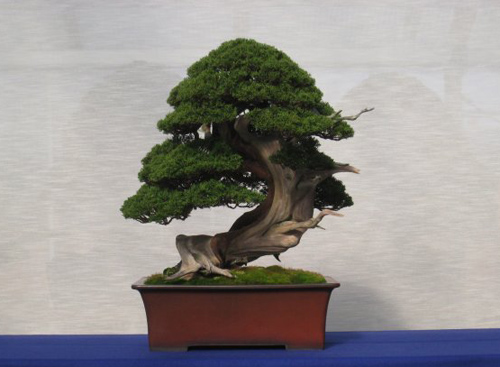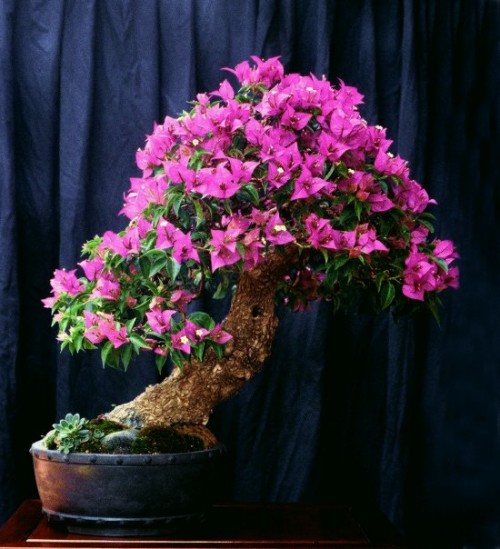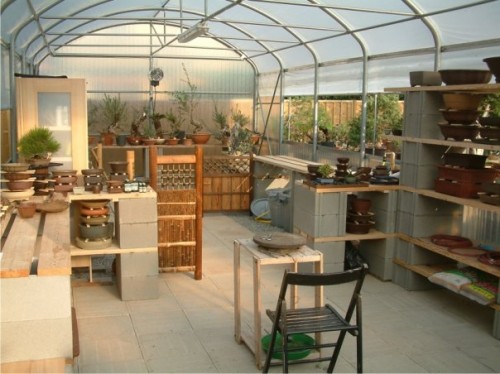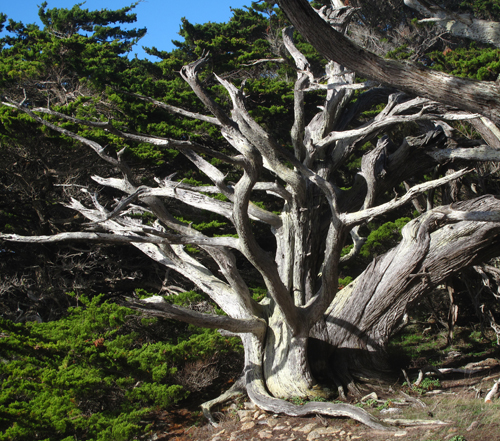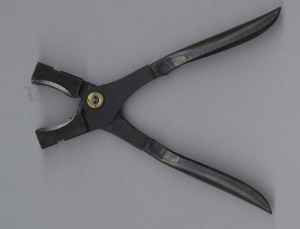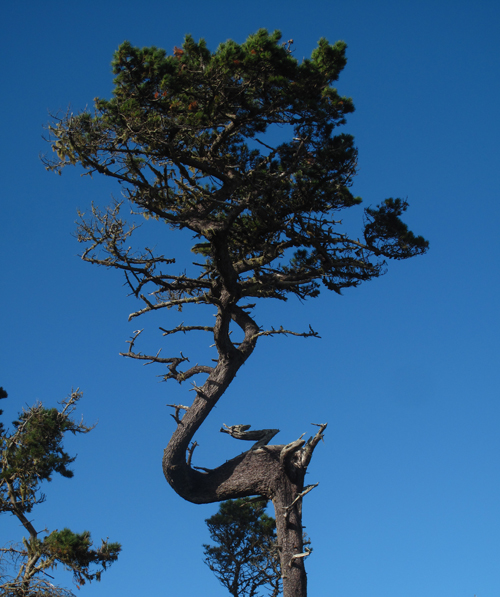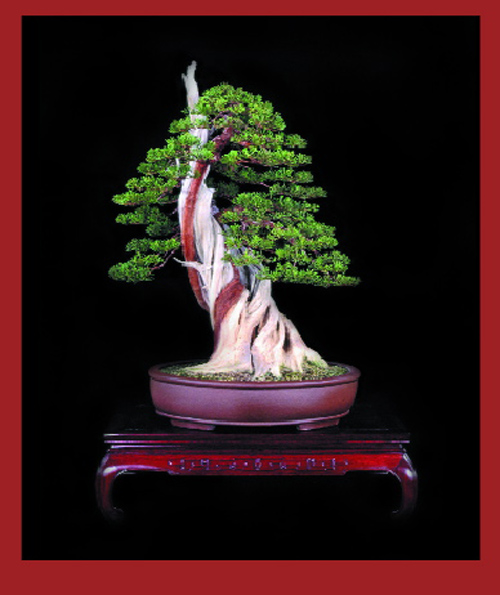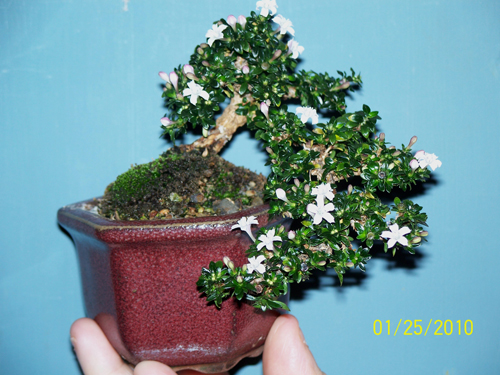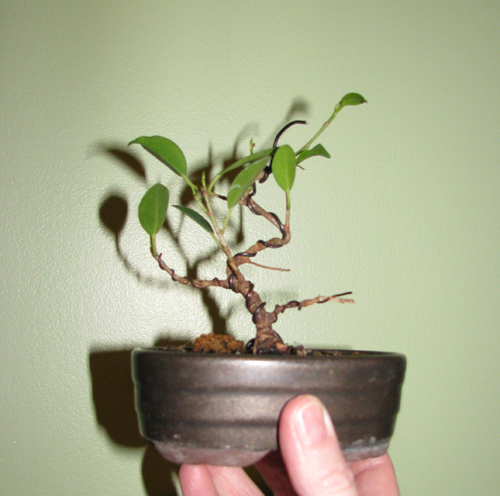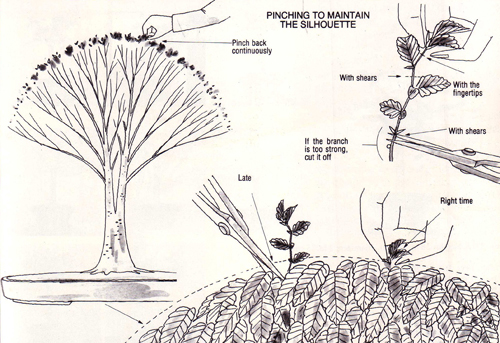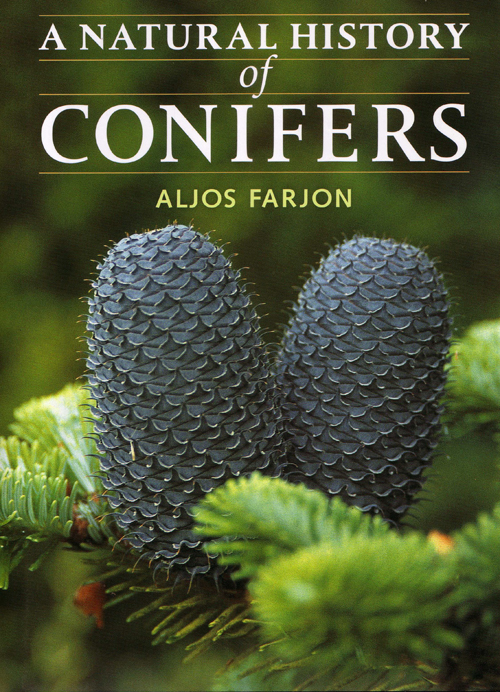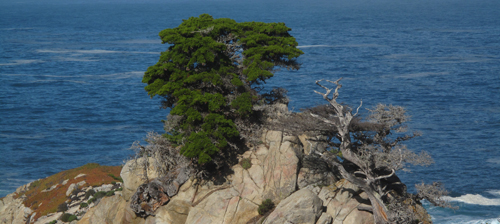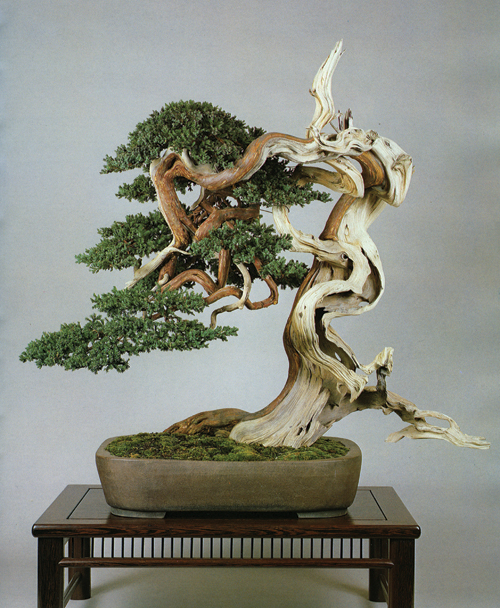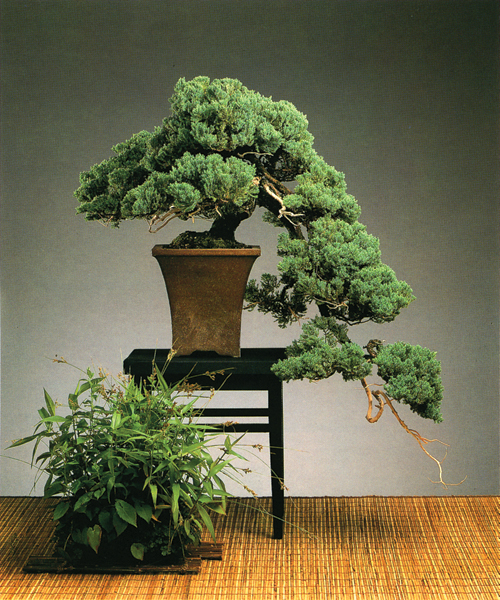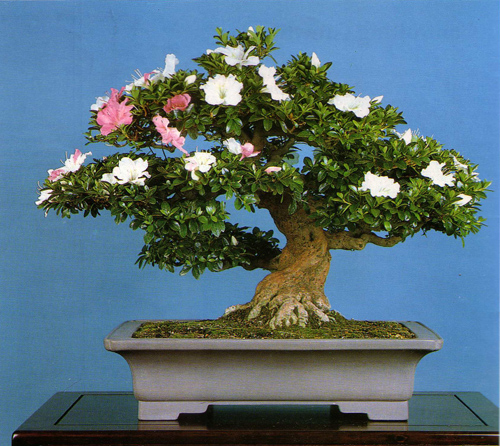
An advanced, but unfinished stage in the development of a Satsuki azalea (see below for a later photo). There are at least three flower variations shown in this photo: all white, all pink, and pink and white striped. Satsuki azaleas are renowned for their vast and varied range of flowers. The photos and illustrations in this post are from Bonsai Today issue 1. The bonsai artist’s name is not mentioned.
Azaleas are easy
Azaleas respond extremely well to pruning during most of the growing season. You can cut off all the branches and new shoots will appear from the stubs (and from practically everywhere else). You can even whack the trunk down to almost nothing and new shoots will spring forth from whatever is left (even from the roots). This and other features like small leaves (on many but not all azaleas), small and beautiful flowers (ditto) and easy adaptability to container culture, make azaleas a favorite for bonsai enthusiasts.
Can you apply the same techniques to other types of trees?
Many of the tips provided in this and subsequent azalea posts will work with other types of trees. However, bear in mind that most trees are not as forgiving as azaleas, so don’t get carried away. It’s always a good idea to know the tolerance levels of whatever type of tree you are working with.
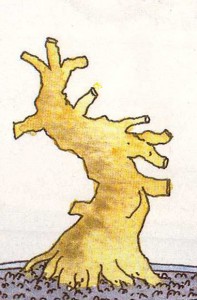
Leave stubs where you want new branches. If a bonsai has been neglected, it might be necessary to remove the old branches and start over (don’t try this with conifers or other trees that don’t bud back on old wood). If you leave stubs where you want new branches, shoots will grow from them and you’ll have a head start.
